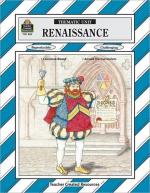|
This section contains 3,621 words (approx. 13 pages at 300 words per page) |

|
Clothing.
While moralists and city officials perceived ostentation and display as a threat to urban society, a large class of wealthy consumers in Renaissance towns admired fashion for its innovations and its ability to express individual tastes. By the fifteenth century a category of wealthy consumers no longer feared ostentatious dress as a sign of concupiscence, the chief evil the friars had identified in lavish clothes. In medieval and Renaissance terminology concupiscence was any strong desire that might lead one to the even greater sins of avarice and sexual depravity. As wealthy Renaissance men and women shed their fears of ruffles and finery, the fashion market expanded in towns like Florence and Venice. By the fifteenth century a vast number of tailors, seamstresses, accessory producers, furriers, glove makers, cobblers, and leatherworkers produced the daily wear and grand costumes consumed in Italian cities...
|
This section contains 3,621 words (approx. 13 pages at 300 words per page) |

|




